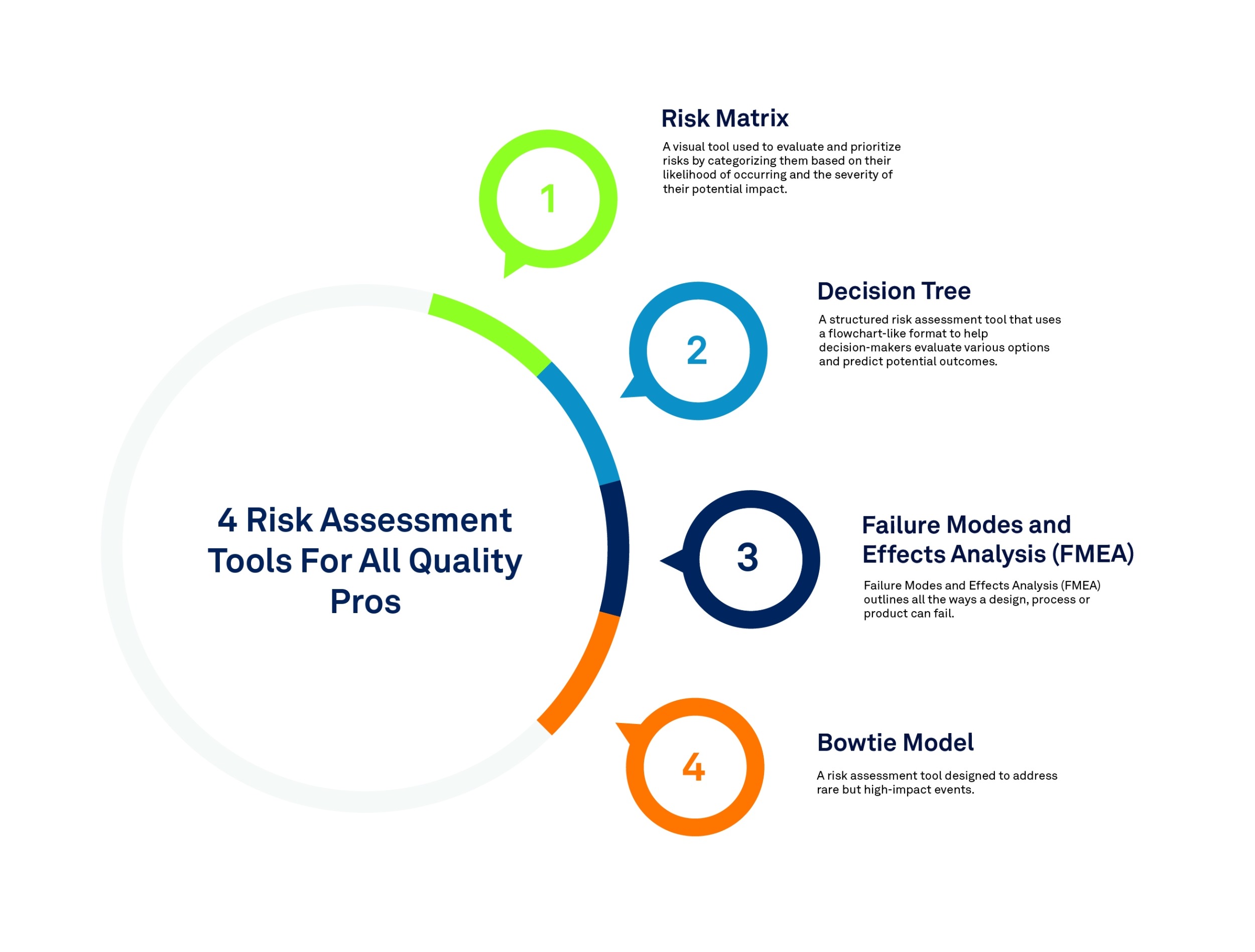In work and in life, success is often the result of hard work and persistence rather than genius or inborn talent. And while some people are naturals when it comes to crunching numbers, others know you don’t have to have all the answers—you just have to know where to find them.
In quality management, making the right choice comes down to having the right tools at hand. In this post, we’ll look at 4 critical risk assessment tools all quality professionals should have in their toolbox.

1. Risk Matrix
The risk matrix is like your hammer or your screwdriver—it’s the tool you’ll come back to again and again in a variety of circumstances. A risk matrix is a visual tool used to evaluate and prioritize risks by categorizing them based on their likelihood of occurring and the severity of their potential impact. It provides a structured way to assign a quantitative value to risks, enabling organizations to determine how each risk should be managed according to predefined policies.
One of the biggest benefits of using a risk matrix is that it lets you put a quantitative risk value on a hazard, which can then be filtered through company policy on how different levels of risk should be handled.
How a Risk Matrix Works: Risk is calculated as the probability of an event occurring multiplied by its potential impact. A risk matrix breaks these elements into separate scales, assigns numeric values to each level of probability and impact, and charts them on a matrix. This visual representation helps identify the overall risk level for each combination.
On a color-coded risk matrix, risks are typically divided into three categories: low (acceptable) risk, moderate risk, and high (unacceptable) risk. This categorization helps organizations decide where additional controls are needed to reduce risk to acceptable levels, though it requires managemen
2. Decision Tree
A decision tree is a structured risk assessment tool that uses a flowchart-like format to help decision-makers evaluate various options and predict potential outcomes.
A decision tree is a less frequently used risk assessment tool, but it can still come in handy. It’s particularly useful for understanding how to apply policies or choosing between different modes of action.
How a Decision Tree Works: A decision tree maps out a series of questions or choices, each leading to specific outcomes. For example, quality professionals in the food industry might use a decision tree to determine when a hazard requires a Critical Control Point (CCP). You can also use statistics to inform a decision tree to figure out, for example, when it’s safe to release a new product.
3. Failure Modes and Effects Analysis (FMEA)
Failure Modes and Effects Analysis (FMEA) outlines all the ways a design, process or product can fail.
How FMEA Works: an FMEA chart places the process step or design in question on individual rows, with vertical columns allowing you to map out:
- Each potential failure and its cause
- The effect on higher levels in the process, assembly or system
- Existing controls and detection methods
- Any required actions and associated details
4. Bowtie Model
The bowtie model is a risk assessment tool designed to address rare but high-impact events. It provides a clear visual representation of the factors contributing to a hazard, as well as the controls in place to prevent or mitigate it. Originally developed for high-risk industries like chemicals and oil and gas, it is now widely used across various industries for its ability to simplify complex risk environments.
How Bowtie Risk Assessment Works:The center of the bowtie diagram represents the hazard or loss-of-control event being evaluated. Preventive controls are shown on the left, outlining measures to stop the hazard from occurring. Recovery controls are shown on the right, illustrating how to mitigate the impact if the event happens.



